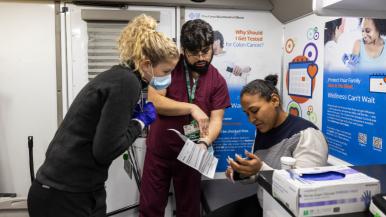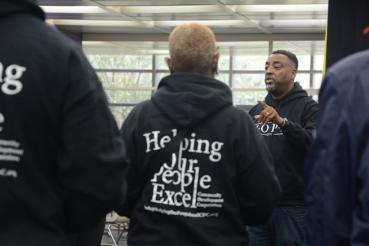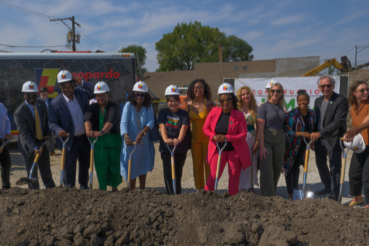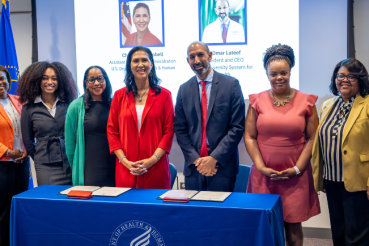Hospitals and public health departments sharing similar health equity goals makes it easier for them to collaborate on increasingly important vaccination campaigns. A newly published paper in the New England Journal of Medicine describes how two large Chicago hospitals and the Chicago Department of Public Health’s shared commitment to prioritize underserved communities helped contain the spread of COVID-19, Mpox and measles.
In "Academic Medical Center–Public Health Partnerships for Outbreak Response,” lead author Elizabeth Davis, MD, of Rush describes how the collaboration with the University of Illinois Health System and the Chicago Department of Public Health started early the COVID-19 pandemic and how it continues today.
That response created an infrastructure that since has proven effective in preventing the spread of Mpox and, most recently, curtailing an outbreak of measles among asylum seekers bused to Chicago. These outbreaks have disproportionately affected Black and Latino communities.
Complementary capabilities
The authors note how fundamental differences between public health departments and academic medical centers can actually complement one another. Academic medical centers and other nonprofit hospitals typically have the clinical resources to provide the testing and vaccinations needed to control outbreaks of infectious diseases but don’t have the public health-oriented care like mass vaccine campaigns in their core missions.
Meanwhile, public health departments often lack the infrastructure to quickly provide the testing and vaccines crucial to slowing the spread of diseases like COVID-19, Mpox and measles but have the epidemiological and logistical expertise to lead outbreak response.
Davis, an internal medicine specialist and medical director of community health equity at Rush, adds “but the shared commitment to keep everyone safe presented the opportunity to show how hospitals and public health departments can collaborate and respond effectively early in a public health crisis.”
'Coordinated collaboration'
“Outbreak response requires a coordinated effort across communities,” said Stockton Mayer, MD, assistant professor of infectious disease at UI Health and co-lead of the UIC Outbreak Response Team. “Departments of public health can't do it by themselves, and academic institutions can't do it by themselves. It requires a coordinated collaboration across different entities to make it work.”
Davis stresses that since infectious diseases outbreaks disproportionately impact under-resourced communities that need these protections most — such as the unhoused and those who live in neighborhoods with poor health care access and crowded living conditions — such collaborations can be guided and informed “by a central tenet of health equity: very intentionally prioritizing health resources for the people and communities who need them most.”
Sustaining the teamwork that started early in the pandemic
In April 2020, when newly declared quarantines helped slow the spread of COVID-19 among the general population, Rush and UI Health clinicians identified one of the largest COVID-19 outbreaks in a homeless shelter in the country by having infection control mechanisms in place, and then rapidly testing the entire population of the shelter when a few individuals tested positive for COVID-19. They then worked with CDPH to isolate individuals with COVID-19, which was key to stopping the outbreak.
When COVID-19 vaccines became available later that year, the Rush, UI Health and CDPH teams began providing mobile testing and vaccine delivery that vaccinated nearly 20,000 Chicagoans in predominantly Black and Latino communities. The authors point out that in addition to vaccines, the mobile teams were able to also engage community residents on other public health issues such as overdose prevention, hypertension, sexual health and diabetes.
Infrastructure in place to curtail measles outbreak
Davis suggested that perhaps the most visible example of the benefits of hospitals and public health departments collaborating and focusing on community needs is how quickly a measles outbreak was controlled after tens of thousands of asylum seekers were bused to Chicago in late 2023 and into 2024. Having an infrastructure in place meant that the Rush, UI Health and CDPH teams were able to quickly provide primary and urgent care services to these families, many of whom were weakened by months of walking through South and Central America.
Because these families were housed in group settings and came primarily from countries where a significant portion of people weren’t vaccinated against measles, there was a potential public health crisis related to one of the fastest spreading viruses. Indeed, a little more than a week after the first few cases were detected, 57 cases had been documented. But the Rush, UI Health and CDPH team initiated a mass vaccination campaign that quickly led to 93% of the shelter residents being vaccinated within three days after the first case was identified.
The Centers for Disease Control also provided assistance, including sophisticated modeling that the agency’s report suggests predicted that “without vaccination, the outbreak could have had more than 200 cases” just within the community of asylum seekers.
Davis hopes that the experience in Chicago can inform efforts nationwide. “Our experience shows that hospitals can partner with public health and community leaders to codesign and deliver innovative care that is community based, focused on structurally disadvantaged geographic areas, and based on disease surveillance and epidemiologic analysis. Hospitals can complement the strengths of departments of public health by bringing educational expertise, content knowledge, and operational expertise in delivering clinical care.”




